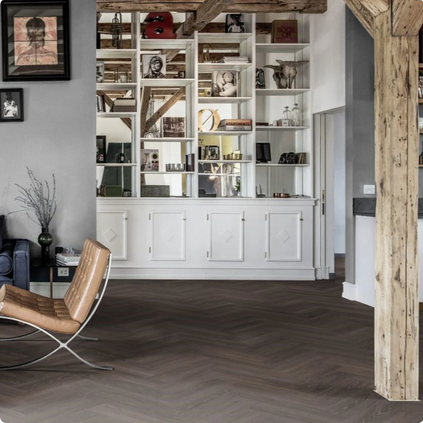
Author, Written by: P. Hirani (Wood flooring Expert)
Choosing the right flooring for a new build home in the UK can feel overwhelming. Unlike period properties where style may already be defined, new builds offer a blank canvas. This gives you the chance to tailor each room to your lifestyle, taste, and budget. But with that freedom comes decision fatigue. Should you go for the warmth of real wood, the durability of vinyl/LVT, or the affordability of laminate?
This guide breaks down the key considerations to help you make confident flooring choices that work with the demands of modern UK homes.
1. Understand Your Lifestyle and Daily Use
Start by thinking practically about how each space in your new home will be used.
-
Busy households with kids or pets may need scratch resistant and easy to clean floors in living areas.
-
Kitchens and bathrooms require water resistant flooring due to moisture and spills.
-
Bedrooms and upstairs rooms can be more flexible, where comfort may be prioritised over toughness.
Understanding traffic levels and lifestyle needs will help you match the right material to the right room.
2. Choose a Consistent Flow for Open Plan Areas
Many new builds feature open plan kitchens, dining, and living areas. Using one flooring type across these spaces creates visual flow and helps rooms feel larger.
-
Luxury Vinyl Tile (LVT) is a popular choice here due to its waterproof qualities and wood or stone effect finishes.
-
Engineered wood gives a natural, high end finish and is suitable for underfloor heating, which is common in new builds.
-
Avoid mixing too many different floor types across open areas, as this can interrupt the visual flow.
3. Think About Underfloor Heating Compatibility
Most new builds in the UK come with modern heating systems, and underfloor heating is often installed or considered. Not all flooring types are suitable.
-
Engineered wood, LVT/Vinyl, and many laminates are compatible with underfloor heating.
-
Solid wood is not recommended, as it can warp with temperature changes.
-
Always check product specifications and get professional advice during installation.
4. Prioritise Water Resistance in Bathrooms and Kitchens
New builds often have sleek, modern bathrooms and kitchen diner setups. In these areas, moisture resistance is non-negotiable.
-
LVT and vinyl sheet flooring are both excellent waterproof options with a wide variety of looks.
-
Waterproof laminate flooring is now available and suitable for splash zones.
-
Tiles remain a popular choice for bathrooms, but they can feel cold underfoot unless paired with underfloor heating.
5. Consider Durability and Maintenance
While new flooring looks great on day one, it also needs to stand the test of time.
-
Laminate flooring is affordable, tough, and easy to maintain, making it ideal for high traffic zones like hallways or stairs.
-
Vinyl and LVT are also low maintenance and perform well in family homes.
-
Engineered wood offers longevity and can be sanded lightly to refresh the surface, but it may need more regular upkeep.
Choose finishes that suit your lifestyle and your willingness to clean or refinish flooring over time.
6. Don’t Ignore Acoustics
Sound can travel easily through new builds, especially in homes with hard floors throughout. If your new property has neighbours close by or you want to reduce echo, pay attention to sound insulation.
-
Underlay with acoustic properties can help reduce noise transfer.
-
Carpet still plays a role in softening bedrooms and upstairs areas if soundproofing is a priority.
This is especially important in townhouses or flats where multiple floors are involved.
7. Match Style with Interior Plans
Think ahead to how your overall interior design will come together.
-
Light oak or grey wood look flooring works well in modern or Scandinavian style homes.
-
Dark floors can create a cosy or formal look but may show dust and scratches more easily.
-
Choose flooring that complements wall colours, furniture, and kitchen cabinetry for a cohesive look.
Samples and mood boards can be helpful before committing to large areas.
Summary
Choosing flooring for your UK new build is about more than style alone. It is a balance of practicality, comfort, and long term value. Focus on high traffic areas first, invest in moisture resistant options where needed, and ensure compatibility with underfloor heating systems. With smart choices early on, you can create a beautiful and functional foundation that enhances your new home for years to come.
Need help choosing flooring for your specific floorplan or lifestyle? Let us know and we’ll guide you through the options.
About Author:
Peter H. is a flooring product expert who knows all about different types of flooring materials. He shares his knowledge in blogs to help readers make the best choices for their spaces.
